Undergoing a tooth extraction is a common dental procedure that requires proper aftercare to ensure successful healing and prevent complications. For individuals who vape, one pressing question often arises—how does vaping impact the healing process after an extraction? This article explores the relationship between vaping and post-extraction recovery, providing a detailed examination of why it is critical to follow professional advice, the potential risks associated with premature vaping, and the science behind how vaping influences oral wound healing. By understanding these key factors, readers can make informed decisions to promote a smooth recovery and avoid unnecessary setbacks.
What are the risks of vaping after a tooth extraction?
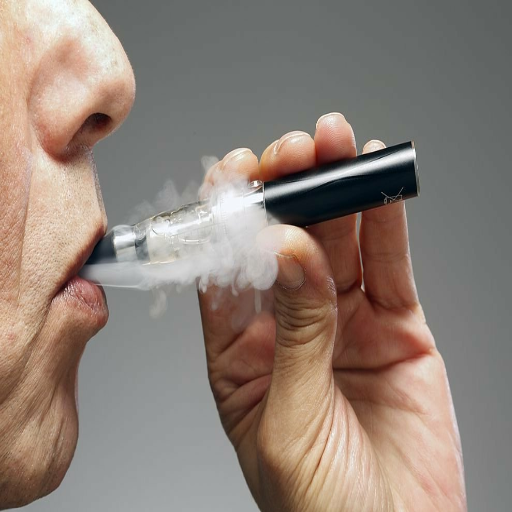
Increased risk of dry socket
Alveolar osteitis is a medical condition that develops when the blood clot, covering the extraction site, is improperly placed and thus gets dislodged, thereby exposing the bone and nerves. The risk of dry sockets may rise significantly due to vaping. This is because while vaping, there is a forceful suction effect which helps in inhaling the vapor. The suction force may dislodge the blood clot over the extraction site. Furthermore, heat and chemical vapor including glycerin, propylene glycol, and nicotine, may serve as irritants and further impede normal body healing mechanisms by worsening the wound.
- During Vaping: The act of vaping creates negative pressure in the mouth, which may lead to the application of forces of about 20-30 cm H2O, which is more than enough to destroy the blood clot.
- Irregular Tissue Perfusion: Smoking nicotine can reduce the blood flow to tissues and impede vascular repair and regeneration, thus delaying the overall healing process.
- Oil Emulsion: the socket devoid of the blood clot is likely to be further irritated by the heat active in makeup liquids that usually range from moderate 200-250 degrees Celsius. This effect is likely to further worsen epithelial cell recovery.
- Moisture Element: Vape oil’s propylene glycol can induce dehydration in mouth tissues, making the conditions for blood clot absorption retention unsatisfactory and disrupting proper healing.
If patients refrain from vaping during the first 48 to 72 hours after extraction, they are more likely to recover without dry socket complications.
Potential for delayed healing
The act of vaping while healing is bound to slow the recovery process owing to its adverse effects on tissue reconstruction as well as regeneration. The chemical and thermal components in vape aerosols could potentially compromise fibroblast activity, which plays a key role in collagen synthesis and wound healing. Moreover, nicotine has been proven to promote vasoconstriction, which limits blood flow (vasoconstriction) to the area and prevents the oxygen and nutrients needed for healing from reaching the wound. This may bring about hypoxic conditions, which consequently lead to reduced epithelial cellular proliferation and an increased duration for which the tissue takes to repair.
- Nicotine: Induced Vasoconstriction – When capillaries constrict, blood flow through the capillary drops drastically, affecting up to 25% of the total supply, on which the targeted area heavily relies, making treating the wound exceedingly difficult.
- Cellular Impact on Fibroblasts: A study suggests that vaping aerosols impact collagen synthesis which results in decreased fibroblast activity by 30-40%, which is significantly inhibiting.
- Heat Stress: Furthermore, heat from prolonged vaping could increase the temperature of tissues by 0.5 to 1 degree celsius, leading to more irritation and slower cell response.
For optimal tissue recovery, one must completely refrain from vaping during the entire healing period, generally 7-10 days or until there is full closure of the extraction.
Impact on blood clot formation
Forming blood clots, also referred to as hemostasis, is a delicate task that relies primarily on a favorable environment for the formation of platelet clusters and the fibrin mesh. Chemical irritants like propylene glycol, nicotine, and volatile organic compounds (VOCs) enter the bloodstream through vaping and are known to have negative impacts on hemostasis.
- Platelet Aggregation: For instance, nicotine is known to promote hyperactivity within the platelets which in turn induces their clustering, causing unstable clotting. Excessive activation of each platelet can lead to fragile thrombi that are susceptible to premature degradation. Such activity may result in delayed wound closure. Technical studies indicate that nicotine consumption can foster the adhesion of platelets, increasing it by twenty percent, and easily shifting the normal dynamics of coagulation.
- Oxygenation Levels: The process of vaping increases carbon monoxide, which lowers the efficiency of oxygen transportation since it binds to the hemoglobin. This lowers the amount of oxygen available which impedes the construction of strong fibrin structures that are crucial for blood clot formation. Clinical studies done on chronic vapor exposure have confirmed a decrease of up to ten percent for systemic oxygenation.
- Coagulation Cascade Interruption: Acrolein and other aldehydes are known to disrupt the functions of endothelial cells. This interferes with the delicate balance of pro-coagulant and anticoagulant factors, which interrupts the multifunctional coagulation process. This disruption increases the period for which blood thrombus remains fragile and slowly resolves after being formed. The range of time being the critical twenty-four to seventy-two hours.
For such reasons, and with further interferences described, it is recommended that cessation of vaping is strictly enforced around the perioperative period to foster rapid healing and ensure the structures of the blood clot remain intact.
Can I use a vape pen immediately after wisdom teeth removal?
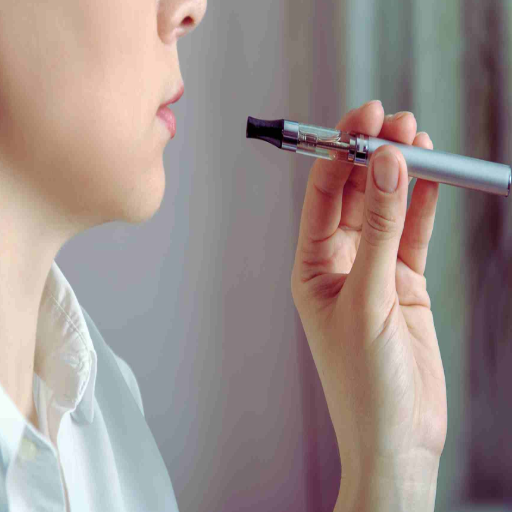
Specific concerns for wisdom tooth extractions
Utilizing a vape pen after a wisdom tooth extraction is fraught with grave concerns that may hinder the healing process. Firstly, the act of vaping negative pressure into the mouth can result in the dislodgment of blood clots that are central to the healing process, which can lead to an excruciating issue called dry socket. More specifically, this is related to the vacuum effect due to inhalation which breaks the clot formation process.
Also, the act of vaping exposes the sutured area to chemicals like formaldehyde, acrolein, and acetaldehyde, all of which are detrimental to the healing of cancer. These compounds are meant to build tissues and a range of operative tissues. According to research, formaldehyde as low as 0.1 parts per million (ppm) can lead to cellular inflammation, which worsens the irritation at the extraction site.
Finally, nicotine’s direct and primary action is as a vasoconstrictor, which reduces blood flow within the area. To ensure the top-most healing of a wound, the area needs proper blood circulation, without any obstructions. Reduced blood perfusion due to high concentrations of nicotine above 1mg/ml directly sugar tissue regeneration.
Based on the aforementioned factors, I recommend strongly against using a vape pen until the oral surgeon verifies that the healing of the surgical site is complete. This may usually take one to two weeks depending on individual healing rates.
Alternatives to vaping during recovery
Setbacks must be avoided during the recovery period to allow for proficient healing. Here are some alternatives to consider:
- Nicotine Replacement Therapy (NRT): Options such as nicotine gum or patches provide a less potent form of nicotine than Loosies or Vapes. Technical studies suggest that transdermal patches provide steady doses of nicotine (around 0.87-0.99 mg/hour depending on patch strength) without the blood flow constrictions caused by smoking.
- Behavioral Techniques: Use craving managing techniques such as mindfulness meditation, physical exercise, or therapy to ease your tension. Such methods present no risk to a person’s health unlike hormonal therapy or medication which contains active ingredients.
- Non-nicotine Alternatives: Substitute options such as flavored toothpicks, herbal inhalers, or sugar-free gum offer the option of vaping without associated risks implanted in them such as lungs getting damaged.
- Hydration and Healthy Diet: Maintaining optimal hydration will support important metabolic activities vital for tissue recovery. For advanced healing, a nutrient-dense diet packed with vitamins A, C, and E is proven to facilitate epithelialization along with collagen synthesis.
Adopting these alternatives will ensure the healing process is not hindered by a lack of oxygen supply or tissue regrowth paralysis, both of which are common risks from vaping during recovery.
How does nicotine affect the healing process after tooth extraction?
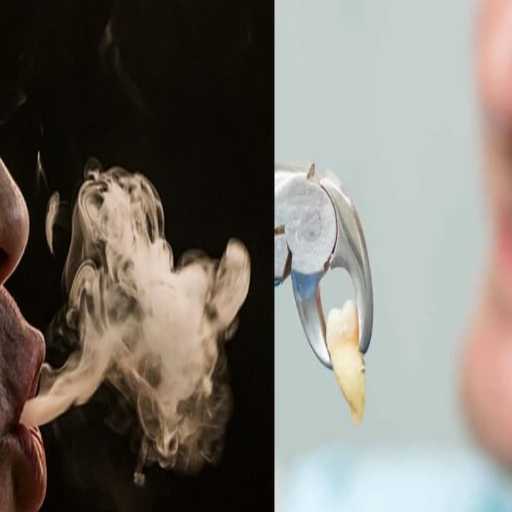
Impact of nicotine on blood flow and healing
Nicotine affects blood supply and healing after a tooth extraction. The most important aspect is the vasoconstriction consequent to its use, which reduces blood flow to the site of extraction. The infused blood restriction means the relevant nutrients and oxygen needed for tissue healing and reformation are not delivered sufficiently. Furthermore, reduced perfusion disrupts the formation of a stable blood clot which is essential at the site for healing and avoiding complications such as dry sockets.
- Vasoconstriction: There is blood vessel narrowing or constriction by capillary vasculature with nicotine stimulating the alpha-adrenergic receptors.
- Tissue Hypoxia: As blood flow decreases, so does oxygen in the region of impact, slowing down fibroblast activity as well as collagen structural protein synthesis.
- Impeded Angiogenesis: Nicotine impairs angiogenesis, a fundamental process for restoring blood supply to areas of damaged tissues.
- Immune Suppression: Neutrophil and macrophage activity suppression leads to immune suppression as well. Thus with reduced activity of these essential cells, the body weakens its chances of countering infections, especially at the site of extraction.
Such changes at the physiological level demonstrate the importance of avoiding nicotine during the recovery phase for improved healing.
Nicotine’s effect on the extraction site
Nicotine impacts the extraction site by inhibiting the body’s healing abilities, resulting in prolonged healing time. Elaborating a bit more:
- Reduced Oxygenation: Having a smoker’s circulatory system, any fibrous area that is waxy necrotic, fibrous hyperplasia, or fibroangioma will have a vasoconstrictive effect which will slow the blood flow. Therefore, tissue replacement is oxygen-deprived. The recovery rate among smokers can be profoundly lowered as tissue oxygen levels become critically poor.
- Decreased Fibroblast Function: Fibroblasts are primarily responsible for collagen manufacture and it is a demesne healer. In vitro evidence suggests nicotine represses fibroblast multiplication which results in a lower rate of collagen formation upon sutured tissue.
- Angiogenesis Suppression: Angiogenesis is defined as the development of new blood vessels which is the most basic requirement for nourishing recuperating tissues. Studies have shown that nicotine prevents vascular endothelial cells from performing properly which greatly restrains this process.
- Immune Response Suppression: Nicotine works by inhibiting neutrophils and macrophages which dampens the immune system and reduces the defense against infection thus contributing to complications such as dry socket or slow recovery in tissue damage.
In conclusion, these statements prove that nicotine negatively impacts multiple biological processes that are crucial for the restoration of tissue integrity. For an ideal recovery, I recommend refraining from all nicotine products and speaking with the physician to develop a healthier alternative during the healing stage of recovery.
What symptoms indicate I’ve vaped too soon after tooth removal?
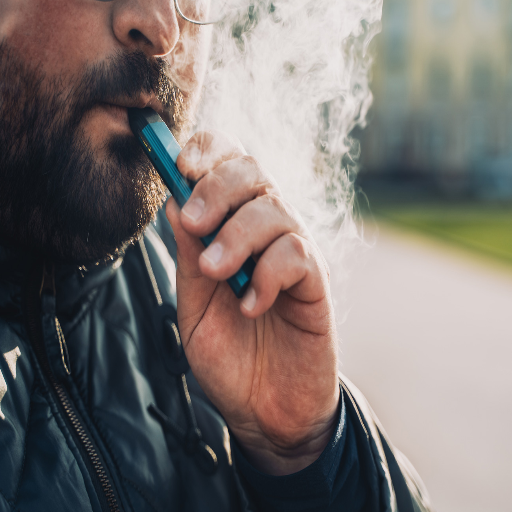
Signs of complications from early vaping
A few symptoms might be present if you’ve induced vaping right after the removal of your tooth:
- Discomfort and Pain: Pain and discomfort at or around the site of removal could be worsening, and a persistent ache might be due to a dry socket. A dry socket tends to occur when the blood clot that shields the wound is disturbed.
- Positive Improvement: It’s the look of the wound and the site around it keeps, or has, swelling in it might suggest there’s no movement in the healing of the tissue. This could also be due to the blood flow and oxygen vape hold impact on your vessel’s functioning.
- Swelling and Redness: Increased local swelling and redness might highlight inflammation or can also be indicative of an infection being boosted by increased nicotine usage and suppression of the immune system.
- Foul Smell or Unpleasant Taste: Offensive odors or tastes can suggest and aid towards a clue in the finding of a bacterial infection at the surgical site.
- Continuous Bleeding: If the bleeding continues for far longer than it should, it is suggestive and a clue that vaping leads to irritation or some sort of problem with the clotting.
These symptoms are closely linked with the negative impacts of vaping, for example, its ability to constrict blood vessels which restricts the supply of oxygen (the main antagonist for angiogenesis at O2 partial pressures of 20 60 mmHg). Moreover, it negatively affects the process where neutrophils and macrophages are essential for tissue repair and defense. In any of the situations discussed above where you experience these symptoms, It would be advisable to immediately stop using a vape and get in touch with an oral surgeon post a dental check-up.
When to seek dental help
Please let me know in case you are still experiencing any of the symptoms such as continuous bleeding or delayed healing, and even swelling along with infection at the site of surgery. In this case, you need to see a dental practitioner immediately. In my case, having prolonged bleeding as a symptom is a red flag and I would seek the assistance of a dentist or an oral surgeon. Especially considering that the reasons such as vaping my worsen this issue of clotting. Swelling or Infection also serves as a good reason to seek professional help that could have resulted from clogged blood vessels due to lack of oxygen supply. In my opinion, these are the conditions that may result from a deficiency in the process of angiogenesis. As a consequence, I would contemplate quitting bad habits such as vaping which would lead to impaired recovery.
- Partial Pressure of Oxygen (O2): O2 levels have to be kept between 20 – 60 mmHg. This range is really necessary for Angiogenesis.
- Vascular health and clot formation: Continuous bleeding could be due to insufficient clot formation which can be tested further with coagulation profiles.
- Immune cell activity: Functional assessment of neutrophils and macrophages should be carried out because they are important for tissue repair and infection control.
Performing this new set of actions greatly increases the chances of optimal post-surgical healing and effective complication resolution.
How does vaping compare to smoking after tooth extraction?
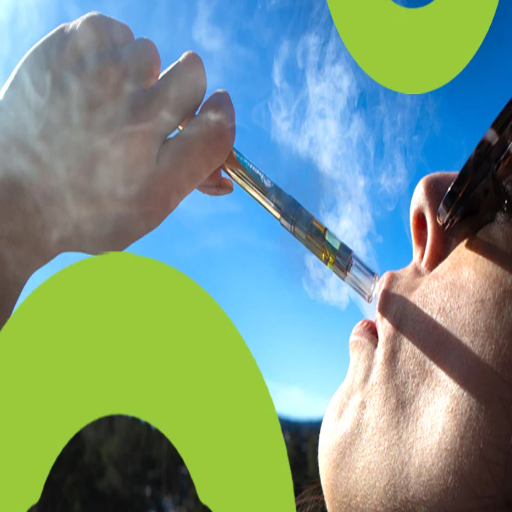
Differences in risks between vaping and smoking
Both vaping and smoking pose a significant concern for healing after oral surgical procedures, but each has its specific risk factors. Let’s analyze how each of them would impact healing:
- Nicotine Absorption and Impact on Blood Vessels: Smoking and vaping both introduce nicotine to the body, which is known to cause vasoconstriction (reduction in blood flow), which varies with different forms of delivery. The degree of blood vasoconstriction directly affects angiogenesis, and depends on ppO2 ostium (surgical site) oxygenation/oxygen partial pressure- when ppO2 is below 20mmHg oxygen supplies are severely hindered. Smoking tends to result in and require a greater and hence contains nicotine higher and tighter constrictions of vessels.
- Differences In Exposure To Chemical Substances: Cigarette smoke consists of over seven thousand noxious chemicals, including carbon monoxide, which lowers hemoglobin’s ability to bond with oxygen. While vaping liquids are less complex chemically, they still contain infectious substances such as propylene glycol and flavorings that can irritate or inflame oral tissues. Both forms of smoking inhibit the immune response but smoking has a higher risk with its broad chemicals vaping does offer restbite.
- The Risks of Dry Socket and its Suction Mechanisms: Both activities have to do with suction. However, the degree and time spent on each may differ. The negative pressure generated by inhaling from a cigarette or vaping device greatly increases the possibility of disturbing the blood clot at the extraction site, which may result in inflammation of the socket. This condition is called a dry socket.
- Tissue and Burns: When considering the two smoking will always expose the oral tissue to even higher degrees of temperature than vaping, which could cause heat burns to the more sensitive edges of the extraction site. This extra heat can make the developing granulation tissue, which is essential in the healing process, much more difficult or even impossible.
By understanding these distinctions, it becomes evident that while both habits are harmful, smoking introduces a greater array of risks due to its chemical and thermal profile. However, cessation of both is strongly recommended to ensure optimal healing conditions.
Impact on oral health and recovery
Engaging in smoking or vaping with an open wound severely obstructs oral health attainment and hinders regrowth because of their harm to local and systemic healing processes. Below is an analysis of some of the issues and their clawback factors:
- Delayed Wound Healing: Medial and physiological angiogenesis and fibroblast activity at the wound site are impaired by smoking and vaporization which directly limits oxygen supply post-extraction due to vasoconstriction caused by nicotine absorption.
- More Wound Site Colonization: Altered immune response as an effect of smoking and vaporization makes the bike tissue easily susceptible to colonization due to chronic diseases.
- Disruption of Coagulum Stability: Dislocation of tampons leads to looseness of draindrum edges that prevent stasis formation which ultimately leads to prevention of jaws and muzzle of sockets closing completely to disallowing air passage.
- Worsening of Tissue Damage: Chemical stimuli and heat exposure, especially from smoking significantly slow down epithelialization and the development of granulation tissue (where the tissue acts like a wound).
Patients can optimize healing outcomes and reduce severe complications by dealing with the underlying factors and stopping smoking and vaping during the recovery period.
Reference sources
Frequently Asked Questions (FAQs)
Q: How long should I wait to vape after tooth extraction?
A: It’s recommended to wait at least 72 hours after tooth extraction before vaping. However, for optimal healing, it’s best to avoid vaping for at least 7-10 days. Vaping too soon can increase the risk of complications such as dry sockets and delayed healing.
Q: Is it safe to vape after wisdom tooth removal?
A: Vaping after wisdom tooth removal is not safe until the extraction site heals properly. The suction created while vaping can dislodge the blood clot, leading to a dry socket. It’s crucial to wait at least 72 hours, but preferably longer, before you start vaping again.
Q: Can vaping cause dry sockets after tooth extraction?
A: Yes, vaping can cause dry sockets after tooth extraction. The suction created when inhaling from a vape device can dislodge the blood clot that forms in the extraction site, leading to a painful condition called dry socket. This is why it’s important to avoid vaping for several days after the procedure.
Q: How does vaping affect the healing process after tooth removal?
A: Vaping after tooth removal can negatively impact the healing process. It can cause dry sockets, increase the risk of infection, and slow down overall healing. The chemicals in vaping products can also irritate the surgical site and interfere with proper blood clot formation.
Q: What are the risks of vaping too soon after oral surgery?
A: Vaping too soon after oral surgery poses several risks, including: 1. Developing a dry socket 2. Increased risk of infection 3. Delayed healing 4. Severe pain 5. Potential need for additional treatment or surgery
Q: Can I use gauze to protect the extraction site while vaping?
A: Using gauze while vaping after tooth extraction is not a safe alternative. The suction created by vaping can still affect the extraction site, even with gauze in place. It’s best to avoid vaping entirely until your dentist gives you the green light.
Q: How long should I stop vaping before and after tooth extraction?
A: It’s advisable to stop vaping at least 24 hours before your tooth extraction to improve healing conditions. After the extraction, wait at least 72 hours before vaping again, though waiting 7-10 days is ideal for proper healing and to minimize complications.
Q: Are there any alternatives for vape users during the healing period after tooth extraction?
A: For vape users struggling during the healing period, consider nicotine patches or gum as temporary alternatives. However, consult with your dentist or doctor before using any nicotine replacement products. Focusing on proper nutrition, hydration, and rest can also help manage cravings and support healing.
Q: How does vaping compare to smoking tobacco after tooth extraction?
A: While vaping is often considered less harmful than smoking tobacco, both should be avoided after tooth extraction. Vaping and smoking can both cause dry sockets, increase infection risk, and delay healing. Neither is safe immediately following oral surgery, and the same waiting period applies to both.







